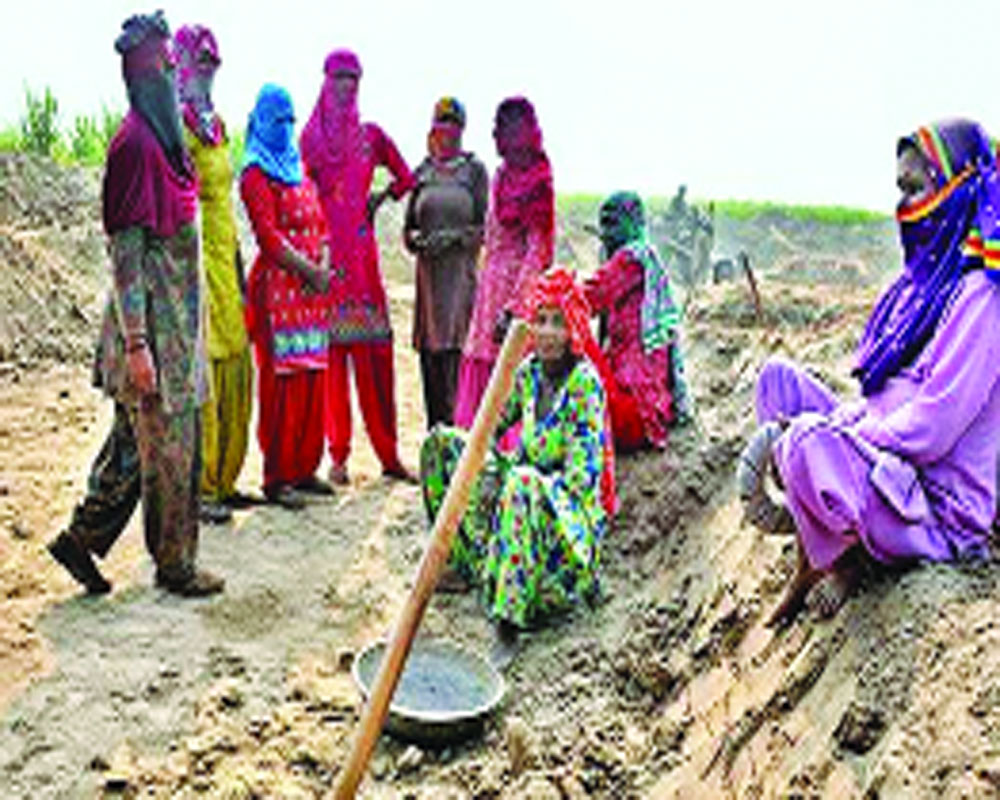MGNREGA may have emerged as a saviour but a national labour databank is needed to harness returnee migrants
There was a time when the Narendra Modi Government was thinking about scrapping the Mahatma Gandhi National Rural Employment Guarantee Scheme (MGNREGA) as it was a relic of the Congress era that was welfarist in intent than being a growth accelerator. Critics panned it for its low productivity, low wages and undermining rural prosperity. But now the reverse exodus of migrants induced by the Coronavirus pandemic has meant that this old scheme has become a life-saver for them in the absence of any source of income or savings. Besides, their home States, battling both the disease spiral and an economic slowdown, are finding a lifeline in it as they are under pressure to absorb their own with jobs. So much so that the Rural Development and Agriculture Ministry is preparing to ask for an additional Rs 20,000 crore for this scheme in the winter session of Parliament. This would be beside the Rs 60,000 crore already earmarked for the scheme in the 2019-20 Union Budget. Such is the desperation that there has been a surge in enrollment with even degree holders (MA, BBA and so on) and self-employed youth signing up for project work and road-digging as they have lost their jobs in the cities. The joblessness trough is so deep that educated youth are settling for basic but guaranteed incomes instead of drawing a blank. The enrollment number has swollen from 34 lakh households, which benefitted in April, to 3.44 crore households in May, the highest tally for the month in the last eight years. Leading migrant-exporting States like Uttar Pradesh, West Bengal, Chhattisgarh, Madhya Pradesh and Odisha were top rankers in creating employment opportunities for their returnee labourers in the same month. The scheme is demand-driven as all kinds of labourers, skilled, semi-skilled and unskilled ones, can get a job within 15 days of registering. They get a 100-day work assurance and are assigned to work on land development, water conservation, water harvesting and drought-proofing. A NABARD study, too, had confirmed the income-generating potential of the scheme, concluding that 57 per cent of the average farming household’s income came from non-farm sources. About 14 crore people across the country have MGNREGA job cards. So the Government will need a massive Rs 2.8 lakh crore if each card holder is to get a guaranteed 100 days of work this year.
Still MGNREGA, in its present form, alone cannot take care of the returning migrants unless its scope is extended to include agricultural activities. The Centre did well by raising the allocation for this scheme but a chunk of this has gone in clearing arrears. Since 2012, about 18 per cent of the annual budgetary allocation for MGNREGA has been spent on clearing pending liabilities from the previous years. Even this financial year began with pending wage and material liabilities of Rs 16,045 crore. An allocation of Rs 1 lakh crore for FY 2020-21 would mean that approximately Rs 84,000 crore would be actually available for employment generation this year. So the payments must be made on time if the scheme is to grease the rural economy. Besides, even with the scheme receiving the highest allocation since it was first mounted, it accounts for just 0.47 per cent of the GDP. This is much lower than the World Bank’s recommendation of 1.7 per cent for optimal functioning. The second challenge is of uniform implementation as States with differing priorities and machineries are entrusted with this task. With fund leakages and corruption at the level of local self-Government, the scheme has gone askew in many places. There has been a consistent demand for expanding the number of work days beyond the existing 100 days but the national average in the last four years has been just 47 days. May be this is an opportune moment to align the scheme with economic imperatives. But it is still the lowest denominator and much more needs to be done. While individual States are already setting up job portals to list returnee workers with their skill sets and allocate them appropriate work zones, this ought to be pan-India so that labour-starved States can benefit too. For at some stage, the upskilled and educated youth would want to move to a job in a greener pasture that gives them their due. Also, labourers need an insurance scheme to secure their lives for a crisis caused by the pandemic.
(Courtesy: The Pioneer)








 OpinionExpress.In
OpinionExpress.In















Comments (0)